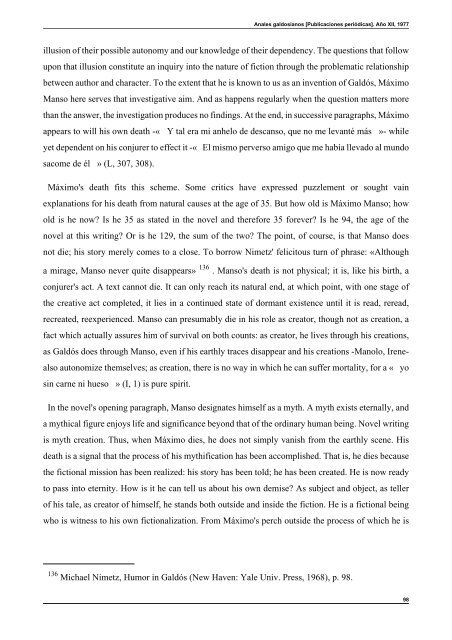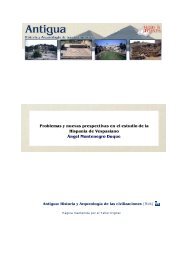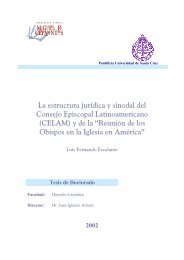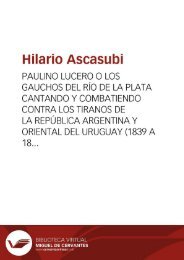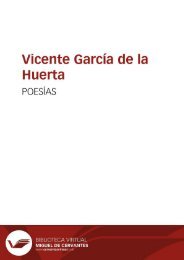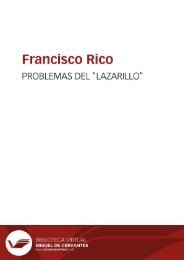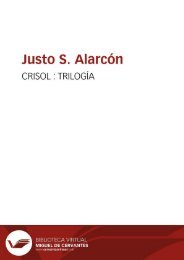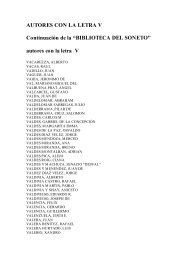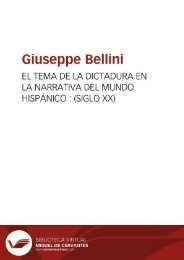You also want an ePaper? Increase the reach of your titles
YUMPU automatically turns print PDFs into web optimized ePapers that Google loves.
Anales galdosianos [Publicaciones periódicas]. Año XII, 1977<br />
illusion of their possible autonomy and our knowledge of their dependency. The questions that follow<br />
upon that illusion constitute an inquiry into the nature of fiction through the problematic relationship<br />
between author and character. To the extent that he is known to us as an invention of <strong>Galdós</strong>, Máximo<br />
Manso here serves that investigative aim. And as happens regularly when the question matters more<br />
than the answer, the investigation produces no findings. At the end, in successive paragraphs, Máximo<br />
appears to will his own death -« Y tal era mi anhelo de descanso, que no me levanté más »- while<br />
yet dependent on his conjurer to effect it -« El mismo perverso amigo que me había llevado al mundo<br />
sacome de él » (L, 307, 308).<br />
Máximo's death fits this scheme. Some critics have expressed puzzlement or sought vain<br />
explanations for his death from natural causes at the age of 35. But how old is Máximo Manso; how<br />
old is he now? Is he 35 as stated in the novel and therefore 35 forever? Is he 94, the age of the<br />
novel at this writing? Or is he 129, the sum of the two? The point, of course, is that Manso does<br />
not die; his story merely comes to a close. To borrow Nimetz' felicitous turn of phrase: «Although<br />
a mirage, Manso never quite disappears» 136 . Manso's death is not physical; it is, like his birth, a<br />
conjurer's act. A text cannot die. It can only reach its natural end, at which point, with one stage of<br />
the creative act completed, it lies in a continued state of dormant existence until it is read, reread,<br />
recreated, reexperienced. Manso can presumably die in his role as creator, though not as creation, a<br />
fact which actually assures him of survival on both counts: as creator, he lives through his creations,<br />
as <strong>Galdós</strong> does through Manso, even if his earthly traces disappear and his creations -Manolo, Irene-<br />
also autonomize themselves; as creation, there is no way in which he can suffer mortality, for a « yo<br />
sin carne ni hueso » (I, 1) is pure spirit.<br />
In the novel's opening paragraph, Manso designates himself as a myth. A myth exists eternally, and<br />
a mythical figure enjoys life and significance beyond that of the ordinary human being. Novel writing<br />
is myth creation. Thus, when Máximo dies, he does not simply vanish from the earthly scene. His<br />
death is a signal that the process of his mythification has been accomplished. That is, he dies because<br />
the fictional mission has been realized: his story has been told; he has been created. He is now ready<br />
to pass into eternity. How is it he can tell us about his own demise? As subject and object, as teller<br />
of his tale, as creator of himself, he stands both outside and inside the fiction. He is a fictional being<br />
who is witness to his own fictionalization. From Máximo's perch outside the process of which he is<br />
136 Michael Nimetz, Humor in <strong>Galdós</strong> (New Haven: Yale Univ. Press, 1968), p. 98.<br />
98


